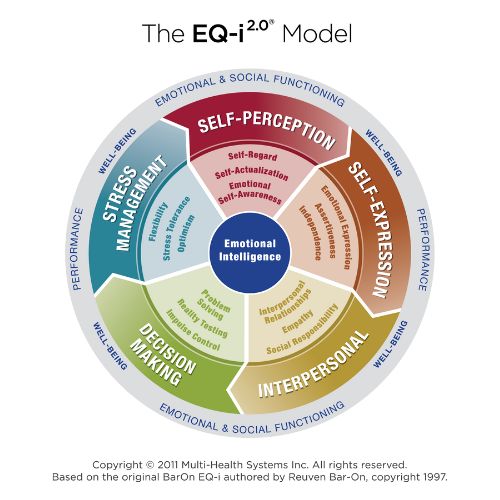Tackling Skill Gap Changes Through Effective Leadership
Have you or your company been affected by a skills gap? According to the Society of Human Resource Management (SHRM), a skills gap is understood as the variance between the skills employees have and the skills organizations require to maintain their competitive status. Consider a situation in which an organization experiences a shift in technology, such as the update of a major online platform. In this scenario, employees using the new technology must update their skillset to remain competent in their roles.
The skills gap affects not only current talent in an organization, but also can create challenges in finding new talent. In a (2022) report released by SHRM, 53% of surveyed HR managers claimed they are facing a skills gap within their organization. Additionally, in a workplace study released by SHRM (2021-2022), 72% of surveyed HR professionals claimed that their greatest challenge in finding talent was a lack of well-qualified candidates. The skills gap has slightly decreased over the last few years as a previously-released skills gap report (SHRM, 2019) showed 75% of surveyed HR professionals found it difficult to recruit new talent due to a shortage of desired skills in candidates. The skills gap report outlined some effective strategies an organization can take to address this ongoing challenge, such as:
- Supply onsite training, such as seminars and training programs
- Improve efforts to retain current employees
- Expand onboarding training programs for improving skills of new hires
These strategies can work together to improve a skills gap. New skills training can be motivating for employees who wish to grow within an organization. Recent research (SHRM, 2022) showed 76% of employees surveyed claimed they are more likely to stay at an organization offering continuous training.
Two common approaches to training and development that are used to bridge a skill-related gap are upskilling and reskilling. Reskilling involves developing new skills to qualify for new roles, while upskilling refers to attaining new skills for the same role (Ortiz-Barbachano, 2020). Prior to onboarding new talent, leaders may find it more efficient to upskill or reskill existing talent. Not only are individuals more satisfied with continuous training provided at their organization, but SHRM (2022) also found that 86% of surveyed HR managers believed training has benefits to retaining talent.
Leading through sizeable changes in the organization, such as upskilling or reskilling, can be difficult. This scenario forces leaders to also focus on developing their own skills, such as emotional intelligence, to navigate this process.
Creating a plan for upskilling and reskilling
To initiate changes in the workplace, such as changes in skillsets or roles, leaders must first come prepared with a strategy. The following steps are suggested for building an effective plan for upskilling or reskilling:
- Define an initiative and set clear objectives that provide current employees with a choice to upgrade their skills.
- Build a skills plan tailored to a company’s needs that carefully identifies people in a position to upgrade their skills, and potentially reskill employees for open roles.
- Match employees with open jobs using software designed to identify skills gaps to begin reskilling (Ortiz-Barbachano, 2020).
This process requires an effective leader that can balance the needs of their team and the organization.
A key component of effective leadership is emotional intelligence. The Center for Creative Leadership outlines important actions one can take to lead with emotional intelligence. These actions are particularly important when communicating with employees about implementing changes to their roles or skillsets. They include:
- Connecting with people on a personal level by showing kindness and empathy.
- Listening closely to people’s responses and understanding what motivates them (Thompkins, 2022).
Before a leader discusses ways in which a person can grow within an organization, it is important to consider whether it aligns with their personal goals and motivations. A poorly executed approach can deter individuals from wanting to grow within the organization. This scenario can result in losing valuable talent on the team with the added challenge of a skills gap.
How does emotional intelligence and change style affect managing a skills gap?
Where there is a need for effectively managing change, such as navigating the challenges of upskilling and reskilling in an organization, there is a need for transformational leadership. Emotional intelligence plays a crucial role in transformational leadership. This style of leadership is seen in leaders who effectively identify areas of change, create a plan, and execute the plan for change in ways that inspire and motivate their teams. A transformational leader retains their team’s commitment through the right amount of influence, inspiration, intellectual stimulation, and individualized consideration, all while effectively recognizing, and regulating their own emotions.
To better understand one’s capability to be a transformational leader, the Emotional Quotient Inventory™ 2.0 (EQ-i 2.0®; MHS, 2011) can be used to measure a person’s strengths and weaknesses in emotional intelligence (see Figure 1). A list of the key factors that particularly shape effective leadership that are measured in the EQ-i 2.0 include:
- Self-perception
- Self-expression
- Interpersonal
- Decision making
- Stress management

These factors are emotional skills that influence one’s ability to lead through change and potentially bridge a skills gap. The EQ-i 2.0 Leadership Report can provide valuable insight on a leader’s strengths and opportunities for improvement regarding transformational leadership and change management.
Additionally, the way a skills gap is managed also depends on a leader’s preferred style in responding to change, along with their understanding of their team’s preferred style. It is important to acknowledge each employee’s change style preferences, as awareness of such preferences allows leaders to be more adaptive and adjust their approach to suit individual needs.
MHS’ Change Style Indicator® is a helpful assessment that provides insight into your personal change style and how others might respond to it. There are three change styles to look out for, as measured by the Change Style Indicator:
- Conserver style – prefers the known to the unknown, reducing uncertainty, and working within existing rules and policies.
- Originator style – prefers faster and extensive change and often challenges the status quo.
- Pragmatist style – prefers to act in an objective manner and approaches change functionally.
Results from the assessment are described as one of the three styles, placed on a continuum that describes the intensity of one’s preference (see Figure 2).

A leader’s change style may not always align with their team’s preferred style. If decisions are inadvertently made on behalf of others, it could lead to a lack of participation, distrust, or resistance to change from team members.
Taken together, results from both the EQ-i 2.0 and the Change Style Indicator can help sharpen one’s awareness as a leader, providing insight into skills and abilities related to effectively managing change.
Bridging a skills gap not only depends on an effective strategy, but most importantly, it depends on a leader that acquires the right knowledge and skills to navigate change and lead their team in upskilling and reskilling in ways that suit the organization. Using emotional intelligence as a leader and understanding one’s own and their team’s preference for change will enable a leader to navigate through changes inherent to addressing a skills gap.
Curious to learn more about the assessments mentioned in this blog?
Click here to learn more about the EQ-i 2.0 and the EQ-i 2.0 Leadership Report.
Click here to learn more about the Change Style Indicator.
References
Multi-Health Systems Inc. (2022). The EQ-i 2.0 and leadership: a recognized link between transformational leadership and high emotional intelligence.
Ortiz-Barbachano, F. (2020, September 16). Reskilling and upskilling your workforce for the post-covid-19 era. The SHRM Blog. Retrieved January 4, 2023
SHRM. (2019, February 5). The skills gap 2019. Retrieved January 4, 2023.
SHRM. (2019). The Global skills shortage: Bridging the talent gap with education, training and sourcing.
SHRM. (2022). 2022 workplace learning & development trends.
SHRM. (2021-2022). State of the workplace study.
Thompkins, S. (2022, June 25). Emotional intelligence and leadership effectiveness: Bringing out the best. Center for Creative Leadership. Retrieved January 4, 2023










